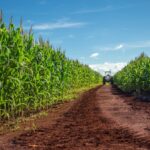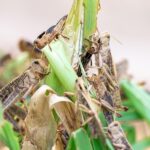Soil conservation is crucial for maintaining healthy farmlands and ensuring sustainable agricultural productivity. South African farmers, who often face challenges such as soil erosion, nutrient depletion, and changing climate conditions, can benefit from adopting effective soil conservation techniques. These methods help to protect the soil from degradation while enhancing its fertility and structure, leading to better crop yields and long-term sustainability.
Here are some essential soil conservation techniques for South African farmers:
1. Contour Plowing
Contour plowing involves plowing along the natural contours of the land rather than up and down slopes. This technique helps reduce water runoff and soil erosion by slowing down water movement across the field. In areas with steep slopes, contour plowing can significantly minimize the loss of topsoil and promote water infiltration.
Benefits:
- Reduces soil erosion
- Enhances water retention
- Prevents loss of nutrients
2. Terracing
Terracing is a method where farmers create stepped levels on slopes to slow down water runoff and reduce soil erosion. It is particularly useful in hilly or mountainous regions, where soil erosion can be severe. By building terraces, farmers can make better use of steep lands while preventing soil loss.
Benefits:
- Controls soil erosion on steep slopes
- Conserves water
- Increases arable land area
3. Crop Rotation
Crop rotation involves growing different crops in succession on the same land over different seasons. This practice helps maintain soil fertility and disrupts pest and disease cycles. By rotating crops with different nutrient requirements, farmers can prevent soil nutrient depletion and improve soil structure.
Benefits:
- Enhances soil fertility
- Prevents nutrient depletion
- Reduces pests and diseases
4. Cover Cropping
Cover crops, such as legumes, grasses, or clover, are planted between main crop seasons to protect the soil from erosion and improve its structure. These crops provide ground cover, reduce the impact of rainfall on the soil, and help build organic matter. In addition, leguminous cover crops can fix nitrogen, enriching the soil for the next planting season.
Benefits:
- Prevents soil erosion
- Improves soil fertility
- Builds organic matter
5. Conservation Tillage
Conservation tillage is a reduced-tillage or no-tillage farming method that disturbs the soil as little as possible. This technique helps maintain soil structure, increases water infiltration, and reduces erosion. Conservation tillage also promotes the buildup of organic matter in the soil, which improves soil health over time.
Benefits:
- Reduces soil erosion
- Conserves soil moisture
- Promotes organic matter accumulation
6. Agroforestry
Agroforestry involves integrating trees and shrubs into farming systems. By planting trees alongside crops, farmers can reduce wind erosion, improve soil structure, and enhance biodiversity on their land. Trees also provide shade, reduce water runoff, and add organic matter to the soil through leaf litter.
Benefits:
- Reduces wind and water erosion
- Enhances soil structure
- Improves biodiversity and ecosystem health
7. Mulching
Mulching involves covering the soil surface with organic materials such as straw, leaves, or grass. Mulch acts as a protective layer that reduces evaporation, prevents erosion, and helps regulate soil temperature. Over time, organic mulches decompose and add valuable nutrients to the soil.
Benefits:
- Prevents soil erosion
- Retains soil moisture
- Suppresses weed growth
8. Composting
Composting is the process of recycling organic waste into nutrient-rich compost, which can be applied to soil to improve its structure and fertility. Composting provides a sustainable way to enhance soil health while reducing the need for synthetic fertilizers. Compost helps to retain moisture, improve drainage, and increase the organic content of the soil.
Benefits:
- Enhances soil fertility
- Increases organic matter
- Promotes better soil structure
9. Strip Cropping
Strip cropping involves planting different crops in alternating strips along the contour of the land. This technique helps reduce soil erosion by providing barriers to water flow, while different root systems improve soil structure and fertility. Farmers often alternate strips of erosion-prone crops with more soil-stabilizing crops like grasses.
Benefits:
- Reduces water runoff and erosion
- Improves soil fertility
- Promotes biodiversity
10. Gully Reclamation
Gullies are formed when water runoff erodes deep channels in the soil. Gully reclamation techniques include filling gullies with soil or rocks and planting vegetation to stabilize the area. By reclaiming gullies, farmers can restore damaged land and prevent further soil loss.
Benefits:
- Prevents further erosion
- Restores degraded land
- Reduces water runoff
Soil conservation is essential for the long-term success of South African agriculture. By adopting techniques such as contour plowing, crop rotation, cover cropping, and agroforestry, farmers can protect their land from degradation, enhance soil fertility, and ensure sustainable farming practices. These methods not only preserve the health of the soil but also contribute to better yields and greater resilience against climate challenges, benefiting both farmers and the environment.
Join 'Farmers Mag' WhatsApp Channel
Get the latest Farming news and tips delivered straight to your WhatsApp
CLICK HERE TO JOIN






